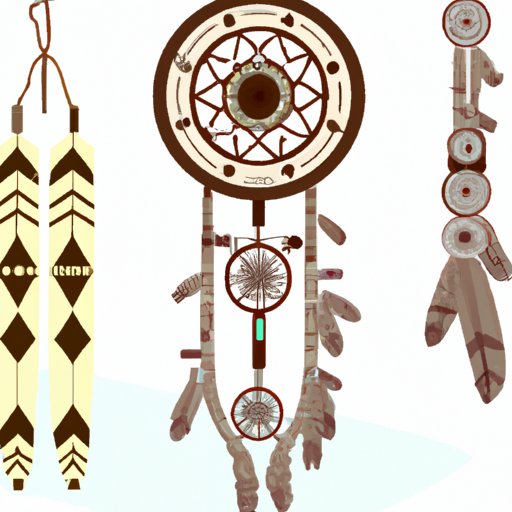Introduction
Cultural appropriation is defined as “the act of taking or using things from a culture that is not your own, especially without showing that you understand or respect this culture” (Cambridge Dictionary, 2020). In recent years, cultural appropriation has become a popular topic of debate and discussion in the media, with many people questioning the ethics of adopting elements of other cultures for their own use. One of the most contentious issues in this debate is the appropriating of dreamcatchers, an item traditionally used by various Indigenous tribes in North America.
In this article, we will explore the debate surrounding dreamcatcher cultural appropriation and examine both the benefits and challenges posed by this issue. We will also unpack the complexities of dreamcatcher cultural appropriation and consider the ethical implications of this practice. Finally, we will summarize our findings and provide recommendations for moving forward.

The Controversy of Dreamcatchers and Cultural Appropriation
Dreamcatchers have been part of Indigenous culture for centuries, originating in the Ojibwe, Lakota and other Native American tribes. The dreamcatchers were traditionally used to ward off bad dreams and offer protection to children, and they are now widely seen as a symbol of Native American culture. However, in recent years, dreamcatchers have become increasingly popular in mainstream society and are often used to decorate homes and clothing.
This trend has sparked a heated debate about the ethics of dreamcatcher cultural appropriation. Many people argue that this practice is disrespectful and exploitative of Indigenous cultures, while others believe that it can be beneficial and even help to spread awareness about Native American culture. Let’s take a closer look at some of the pros and cons of dreamcatcher cultural appropriation.
Exploring the Pros and Cons of Dreamcatcher Cultural Appropriation
One of the main arguments in favor of dreamcatcher cultural appropriation is that it can help to spread awareness about Native American culture and bring attention to important issues facing Indigenous communities. As author and activist Adrienne K. notes, “When done respectfully, cultural appropriation can be a way to honor and appreciate different cultures” (Teen Vogue, 2017).
In addition, many people argue that dreamcatcher cultural appropriation can be beneficial for Indigenous communities by providing economic opportunities. For example, a study conducted by the University of Washington found that the sale of dreamcatchers made by Native American artists was a source of income for many Indigenous families (Lane et al., 2003).
However, there are also many arguments against dreamcatcher cultural appropriation. Critics argue that it is a form of exploitation and disrespect of Indigenous cultures, as it often involves taking elements of these cultures out of their original contexts and commodifying them. Furthermore, some argue that dreamcatcher cultural appropriation can lead to inaccurate and oversimplified representations of Indigenous cultures, which can be damaging and perpetuate stereotypes.

Unpacking the Complexities of Dreamcatcher Cultural Appropriation
It is clear that dreamcatcher cultural appropriation is a complex issue, and it is important to consider the ethical implications of this practice. One key question to ask is whether dreamcatcher cultural appropriation is respectful to Indigenous cultures. Some argue that it is possible to engage with dreamcatchers in a respectful way, such as by learning more about the history and meaning behind them or purchasing dreamcatchers from Indigenous artists. Others argue that dreamcatcher cultural appropriation is always disrespectful, as it involves taking elements of Indigenous cultures out of their original contexts and commodifying them.
It is also important to understand the history behind dreamcatcher cultural appropriation. While dreamcatchers have become increasingly popular in mainstream society in recent years, they have been part of Indigenous culture for centuries. Thus, it is important to recognize the long history of Indigenous peoples’ connection to dreamcatchers and be aware of the potential implications of engaging with them in a commercialized way.
Conclusion
In conclusion, dreamcatcher cultural appropriation is a complex issue that has sparked a heated debate in recent years. While there are some potential benefits to this practice, such as spreading awareness about Indigenous cultures and providing economic opportunities, there are also many potential challenges, such as disrespecting and exploiting Indigenous cultures. It is important to consider the ethical implications of dreamcatcher cultural appropriation and be aware of the history behind this practice.
Ultimately, it is up to individuals to decide how they choose to engage with dreamcatchers and other elements of Indigenous cultures. However, it is important to do so in a way that is respectful and mindful of the potential implications of this practice.
(Note: Is this article not meeting your expectations? Do you have knowledge or insights to share? Unlock new opportunities and expand your reach by joining our authors team. Click Registration to join us and share your expertise with our readers.)
